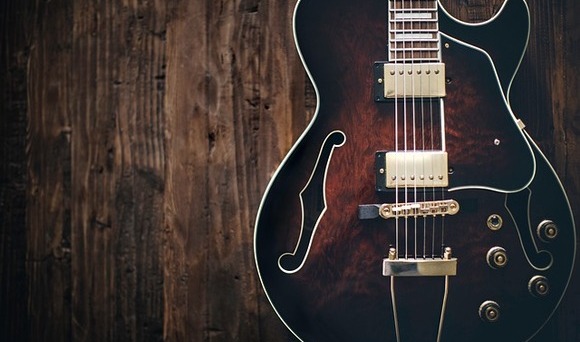Buying your first guitar is an exciting milestone, but it can also be a confusing one, especially when it comes to determining how much to spend. While prices for guitars vary widely, it’s important to set a budget that matches your needs and goals as a player. In this article, we’ll discuss what makes a good budget for a guitar, whether you’re a beginner or looking to upgrade.

1. What’s Your Skill Level?
Before determining a budget, it’s crucial to assess your skill level and goals. Here are some general guidelines:
- Beginners: If you’re just starting out, a budget of $100 to $300 is typically ideal. At this price range, you can find quality instruments that sound good, are easy to play, and offer good durability. Brands like Yamaha, Fender, and Epiphone offer reliable entry-level models.
- Intermediate Players: For those who have been playing for a while and want to upgrade, a budget of $300 to $700 will open up options with better sound quality, craftsmanship, and features. These guitars often include better tonewoods, upgraded pickups, and improved playability.
- Advanced Players: If you’re an experienced guitarist looking for professional quality, you might want to budget $700 and up. High-end models offer premium materials, specialized features, and incredible tone. Brands like Gibson, PRS, and high-end Fender models cater to this range.
2. Acoustic vs. Electric Guitar Budget
The type of guitar you’re buying also impacts your budget. Here’s a general breakdown of what you can expect to spend:
- Acoustic Guitar: For a beginner acoustic guitar, a budget between $150 to $300 is reasonable. This range will offer a solid guitar that’s easy to play and sounds good. Higher-end acoustics can cost upwards of $500 for advanced players.
- Electric Guitar: A decent beginner electric guitar can range from $150 to $400. Keep in mind that you’ll also need to budget for an amplifier, which can cost between $50 to $200 for a good beginner amp. Advanced electric guitarists should plan for a budget of $500 and up for more premium models.
3. Factor in Accessories
When setting a budget, remember to account for essential accessories, especially if you’re a beginner. These can add anywhere from $50 to $150 to your total cost:
- Guitar Case or Gig Bag: A protective case is important for storing and transporting your guitar.
- Tuner: A good quality tuner can help you keep your guitar sounding its best.
- Strap: A comfortable strap is essential for playing while standing.
- Picks: Stock up on guitar picks, which are inexpensive but crucial for playing.
- Capo: For acoustic guitarists, a capo can help you play in different keys easily.
4. What’s the Best Value for Money?
It’s important to look for guitars that offer the best value for money. Some of the most reputable budget-friendly brands include:
- Yamaha: Known for producing affordable yet high-quality guitars, Yamaha is a great choice for beginners and intermediate players alike.
- Squier: Fender’s more budget-friendly line, Squier, offers great entry-level electric guitars.
- Ibanez: Ibanez is known for their budget-friendly electric and acoustic guitars, particularly for players interested in rock or metal.
- Epiphone: The budget brand of Gibson, Epiphone offers great value for money, especially for players interested in rock and blues.
5. Should You Consider Used Guitars?
Another way to stretch your budget is by considering used guitars. A used guitar in good condition can save you a significant amount of money while still offering great sound and playability. However, if you’re new to buying guitars, it’s recommended to bring along someone with more experience to help evaluate the condition of the instrument.
6. Balancing Price and Playability
At the end of the day, it’s essential to find a guitar that not only fits your budget but also feels comfortable to play. A higher price doesn’t always mean a better guitar for your needs, especially if you’re just starting out. Look for features such as:
- Good build quality: Even in budget guitars, good construction is key to ensuring the guitar stays in tune and plays well.
- Comfort: The neck and body should feel comfortable to hold and play for extended periods.
- Sound: A guitar that produces clear, resonant sound (even in lower price ranges) can make a big difference in your learning experience.
Conclusion
So, what’s a good budget for a guitar? For beginners, spending $150 to $300 on an acoustic or electric guitar should provide a solid, reliable instrument to start learning. Intermediate players should consider a budget of $300 to $700, while advanced players might spend $700 and up for professional-level instruments.
It’s also important to factor in accessories and potentially an amplifier if you’re going the electric route. Remember, the goal is to find a guitar that feels good to play and suits your needs—whether that means sticking to a tight budget or investing a bit more for a higher-quality instrument.
